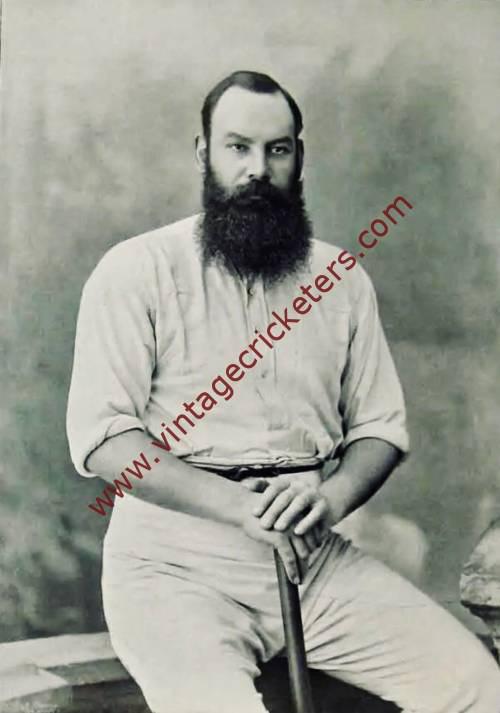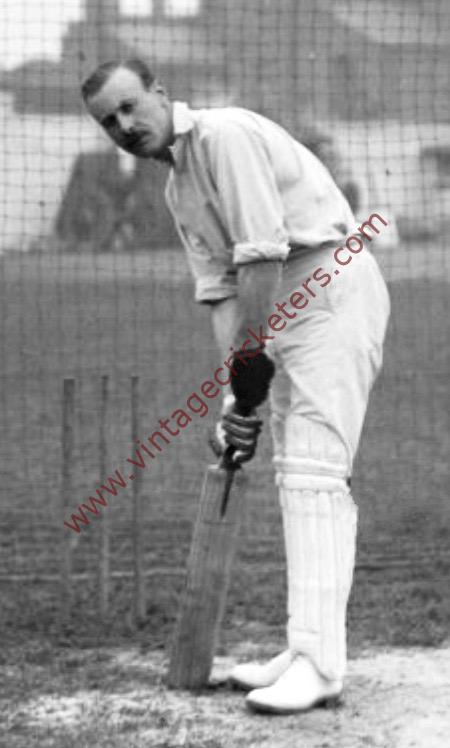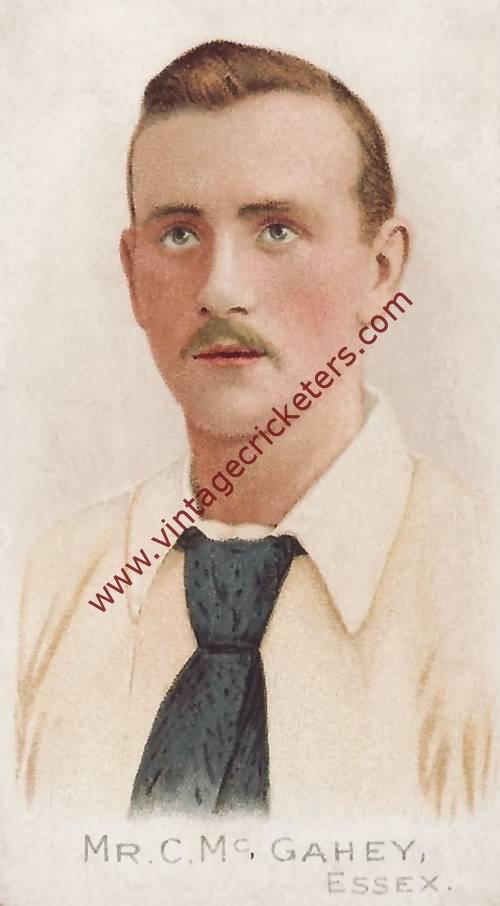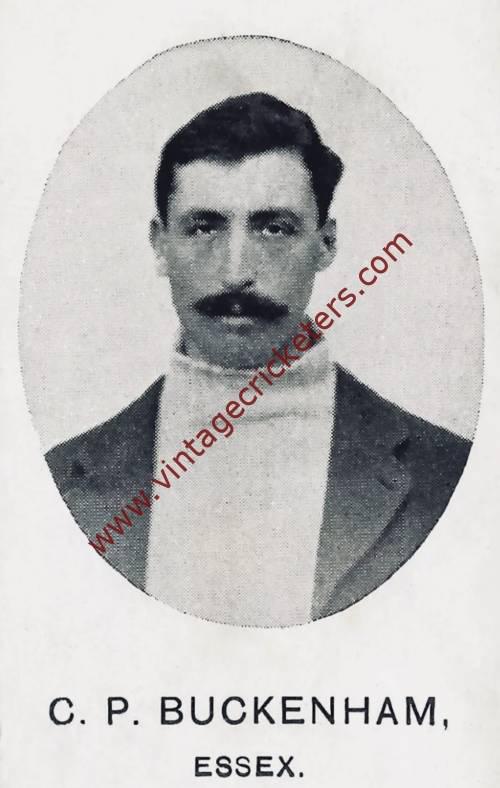Please choose your photo size from the drop down menu below.
If you wish your photo to be framed please select Yes.
Note: 16″x 20″not available in a frame.
Images can also be added to accessories. To order please follow these links
£8.95 – £49.95
Please choose your photo size from the drop down menu below.
If you wish your photo to be framed please select Yes.
Note: 16″x 20″not available in a frame.
Images can also be added to accessories. To order please follow these links
The maximum number of views of this element is reached.
Please contact the webmaster to enable unlimited views.
Battersea, London born Phil Mead played as a child for South London Schools and joined the Surrey ground staff in 1902. He then qualified for Hampshire because Surrey’s batting strength was such that they were unable to offer him a contract. After one match against the touring Australians when not qualified in 1905, Mead immediately became a regular with Hampshire, where he would become one of the County’s all time greats, but initially he faltered after a promising beginning including scoring 109 against Yorkshire.
However, from 1907 onwards Mead, at this stage an opening batsman, advanced very rapidly, with his average reaching 39 in the very wet summer of 1909. In 1911, he moved down the order to his familiar position of number four, and so successful was this move that he was the leading run scorer in 1911 and 1913, and toured Australia in 1911-1912, when he made his Test match debut at Sydney in December 1911, and South Africa in 1913-1914. He was not nearly so successful as might have been expected in Australia, but made up for it later in 1912 when he went unbeaten (160 not out and 33 not out) in Hampshire’s historic win over The Australians at Southampton. In South Africa he hit a maiden Test century at Johannesburg in December 1913 making 102 and followed that up with 86 at the same venue in the New Year’s Test and 117 at Port Elizabeth.
After the First World War halted County cricket (Mead was rejected from active service because of varicose veins), Mead’s list of achievements grew, as his always-remarkable watchfulness and superb footwork made him the complete master of bowlers such as Tich Freeman who were deadly against batsmen of poorer technique. In August 1921, after missing the first three Tests against Australia, Mead hit 182 not out at The Oval in the last Test, showing that England seriously erred in not choosing him for the earlier games when Jack Gregory and Ted McDonald had a complete mastery over their batsmen. He also hit his highest score of 280 not out that year against Nottinghamshire. Hampshire, remarkably, lost the match as they had been bowled out cheaply on a good wicket in their first innings!
Between 1922 and 1928, Mead was consistently one of the top batsmen in County cricket and toured South Africa in 1922-23, making 181 at Durban, falling just short of his effort at The Oval, but England’s remarkable batting strength, with men like Herbert Sutcliffe, Wally Hammond, Jack Hobbs and Frank Woolley, meant Mead had few opportunities overall at Test level. After scoring over 3,000 runs in 1928, Mead toured Australia for the second time, but was dropped after one Test at Brisbane so as to make room for another bowler. It proved his 17th and final Test match, during which he averaged a very respectable 49.37.
In 1929, affected by injury, Mead declined substantially, failing to reach 2,000 runs for the first time since the War. However, despite no longer being in the front rank of English batsmen, Mead was still feared for his great technical skill and reached a thousand runs every year until, at the age of 49 in 1936, he was not re-engaged by Hampshire. In his last innings, Mead played a superbly skilful 52 against Hedley Verity on a badly wearing wicket, and he played for Suffolk in the Minor Counties Championship with considerable success in 1938 and 1939 while coaching cricket at Framlingham College.
Only Jack Hobbs, Frank Woolley and Patsy Hendren have made more first class runs than Phil Mead’s 55,061 aggregate, and nobody has made more for one team than the 48,892 he piled up for Hampshire. In 814 first class matches he had a batting average of 47.67 with 153 centuries and 258 half centuries, with a top score of 280 not out. He also bowled slow left-arm orthodox spin and took 277 wickets in first class cricket at 34.70 apiece with a best return of 7-18, one of 5 five wicket hauls. He also took 675 catches in first class play.
John Arlott wrote of him:
“No one who saw Philip Mead bat will ever forget him. At the fall of Hampshire’s second wicket he would emerge from the pavilion with a peculiar rolling gait, his sloping shoulders, wide hips and heavy, bowed legs giving him the bottom-heavy appearance of those lead-based, won’t-fall-down dolls of our childhood. Leathery complexioned, with a long nose, a wry expression and eyes which seemed always to be screwed up against the sun, he had a semi-comic air: but he was a very serious batsman. At the crease, he went through precisely the same ritual before every ball was bowled to him. First he touched his cap four times to short-leg (whether that fieldsman was there or not) then he tapped his bat four times in the crease and, finally, took four small, shuffling strides up to it. Then, and only then, the bowler might bowl: if he tried to do so before the ritual was completed, Philip stepped away from his stumps and, when the bowler stopped, started the whole procedure over again. He wore out some dozens of cap-peaks in his time, and – “I know it sometimes held them up; but is used to put some of the hasty ones off, and I shouldn’t have felt happy if I hadn’t done it.”
Mead was also briefly a footballer. In 1907, Mead signed for Southern League club Southampton for one season to assist the club’s reserve team as a useful inside forward, but he had no intention of taking up football as a full time occupation. On 21st December 1907, he was at Fratton Park, Portsmouth for a reserve fixture when he was summoned to The Dell where The Saints had an emergency as both regular goalkeepers, Herbert Lock and Tom Burrows were unavailable through injury. Mead therefore played in goal in a Southern League match against West Ham United. According to Holley & Chalk’s “The Alphabet of the Saints” he “shaped up well but was only required to save two shots and kept a blank sheet in a 0-0 draw.”
His wife’s brother, Frank Englefield, was also a professional footballer, playing for both Southampton and Fulham.
Vintage Cricketers was founded in July 2019. There are more photographs of this cricketer in the Vintage Cricketers library, which are due to be loaded in due course. In the meantime, please send a message to us using the contact form at the bottom left of this page and we can arrange to prepare and publish all images of this cricketer if you have a particular interest in him.
| Weight | N/A |
|---|



